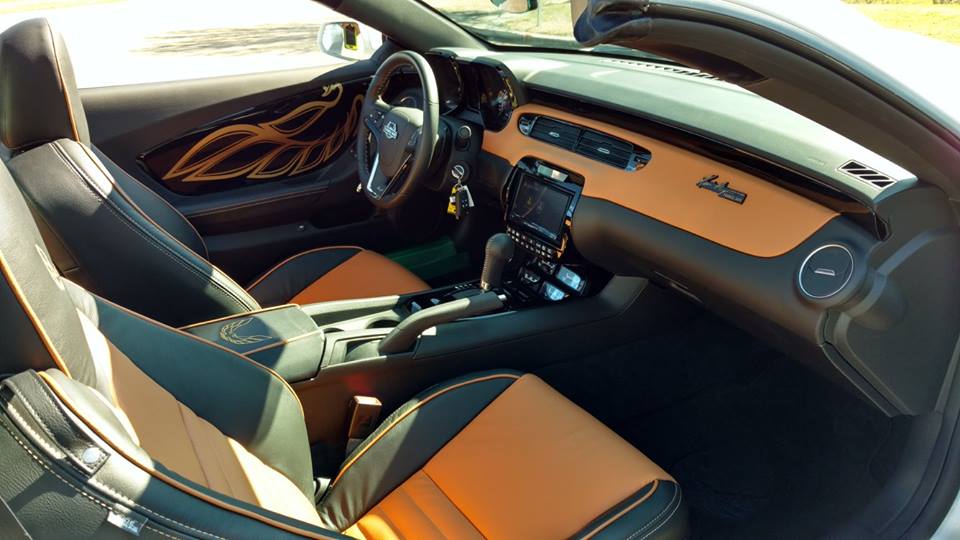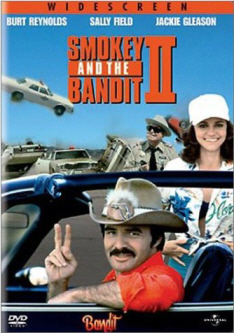

He was tallish, dark and handsome, and did possess a slight, easy charm, and Smokey and the Bandit does give some clues as to how he became such a big box office star at the end of the 1970s.Īs a film star he's probably an acquired taste, as there's a degree of smugness and self-satisfaction about his starring roles that can be off-putting if you're not already fully on board. It's an affordable car that almost any Joe Schmo can aspire to.īurt Reynolds was an actor who had plugged away in television for several years, before landing a leading role in John Boorman's wilderness drama Deliverance in 1972.

And the Trans Am sure ain't no Aston Martin, it's not even a Corvette. All you need is a hat, a grin and a Trans Am.

Better still, he's kind of attainable as a role model in a way that James Bond generally isn't. And, unlike Bond, he's definitely American. He's a cool guy in a cool car, a legend in his own lifetime and a man who is irresistible to women everywhere. Reynolds's Bandit is almost like a blue collar American version of James Bond. It's a showcase for his twinkly-eyed good ol' boy persona, accompanied by his casually worn cowboy hat, that oddly girlish laugh and, since it's the '70s, finished off with an impressive moustache.

Smokey and the Bandit is also very much a star vehicle for Burt Reynolds, at least as much as his black Trans Am. It's rural, not urban, it's southern not northern, and it's flyover country, not eastern or western. Smokey and the Bandit might be very American, but it's a vision of a very distinct part of America. Of course, urban sophisticates would probably baulk at this. Even its premise is based on strange American laws that border on the incomprehensible for the rest of the world. It's got massive trucks, a fat sheriff, cases of cool beer, a Trans Am, a hero who wears a cowboy hat, and a supporting character called Cledus. And despite its widespread colonization of the world's film and television screens, American product can sometimes seem startlingly, er, American.Īnd Smokey and the Bandit must be one of the most American films ever made. America is a large and diverse country, with its own idiosyncratic tastes and sub-cultures. And the film serves as a reminder of something that non-American audiences sometimes forget. While Smokey and the Bandit was a huge hit in the US that year, it obviously wasn't the global phenomenon that Star Wars was. So Justice senior and Justice junior give pursuit to Carrie, and by extension The Bandit, thus complicating and personalising the cross-country car chase. Just to complicate things slightly, her fiancé is a dimwitted cop (played by Mike Henry), and his father is Sheriff Buford T. The talkative Carrie has ditched her fiancé at the altar after having last minute second thoughts. Of course, since he's the star of the movie, it's Burt Reynolds who gets to drive the fancy black sports car, and not the big ass old truck.īurt Reynolds and Sally Field in Smokey and the BanditĪlong the way, the Bandit picks up a young woman, runaway bride Carrie (Sally Field), who is literally standing by the roadside in her wedding dress. One of them will drive the truck, while the other will act as "blocker" in a black Pontiac Firebird Trans Am. But Coors beer can't be sold east of the Mississippi, so the Bandit and Cledus need to avoid the law as much as possible. Two wealthy Texans want the beer for a celebration in Atlanta and are prepared to pay handsomely for it. In Smokey and the Bandit, Bo Darville, also known as "The Bandit" (Burt Reynolds), and his truck driving pal Cledus (Jerry Reed) take on the job of transporting a lorry load of Coors beer across state lines from Texarkana into Atlanta, Georgia. It was a cross-country car chase comedy called Smokey and the Bandit, a film as divorced from the era of modern blockbuster cinema as its box office rival Star Wars is inextricably linked to it. or maybe the James Bond epic The Spy Who Loved Me? Nope. Was it Close Encounters of the Third Kind. But if I asked you to name the second biggest, you might struggle a little. If I asked you to name the biggest film at the US box office in 1977, you might well guess (correctly) that it was Star Wars.


 0 kommentar(er)
0 kommentar(er)
